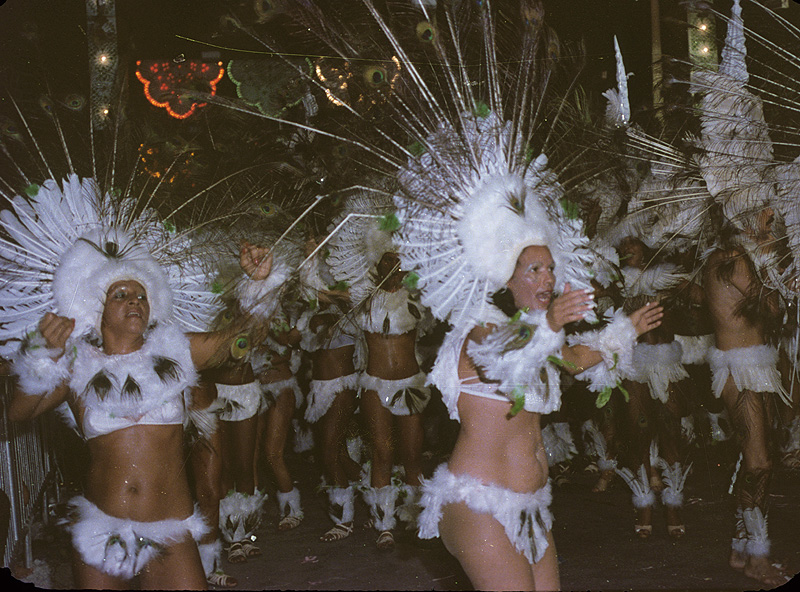
Rio de Janeiro (36) |
 |
|---|
Source: WTL photograph© on site in Rio de Janeiro. Comment: This is a view of Carnival (Portuguese: Carnaval), often called "the biggest party on Earth". The term itself comes from Latin carnem levare (to put away meat), referring to the last day before the old Catholic tradition of refraining from eating meat during the 40 days of Lent (the season before Holy Week and Easter). In the 19th century European masked Carnival balls became popular in Brazil, especially in Rio. By 1932, there were more than 100 high society masked balls throughout the city. During the early years, bands composed of working class musicians were hired to play for these balls, and their music became the basis for modern samba. Various samba clubs then created parades in front of distinguished members of the upper classes. Nowadays, Carnival has three features: street events, club masked balls, and the samba parade. A current feature is also the welcome extended by Rio to the gay community. The most African aspect of Carnival is found in the samba parade The word "samba" itself comes from Angolan, which referred to a ceremony in which men danced with women partners. In Rio, the government supports the parade and awards the prizes for various categories of costumes, floats, and dancers, etc. Embedded photo series, see: => Rio #36a; Rio #3b; Rio #36c; Rio #36d; Rio #36e. Humanities themes: Afro-Latin syncretism; hybridity; carnival (carnaval). |
|---|
 |